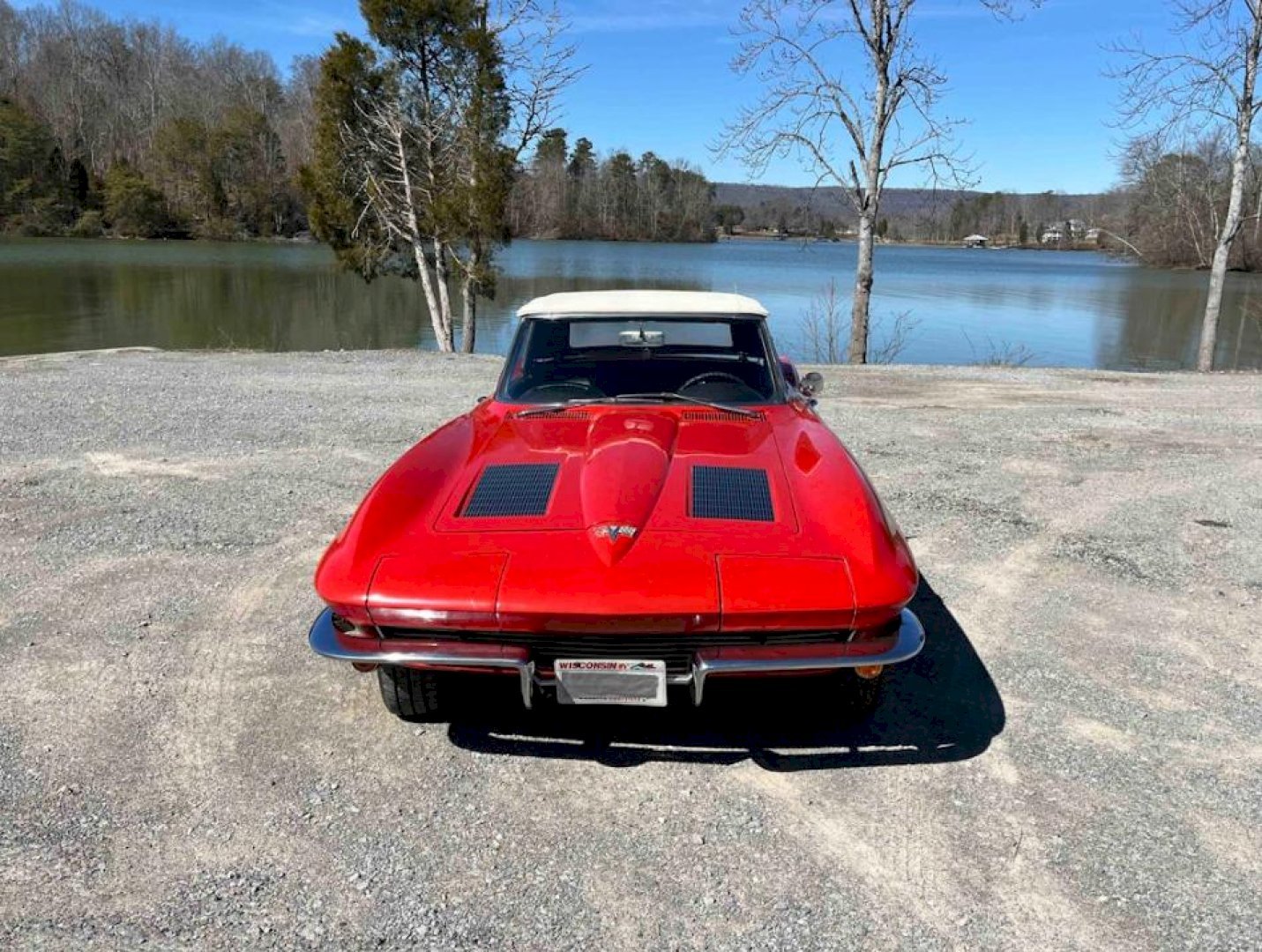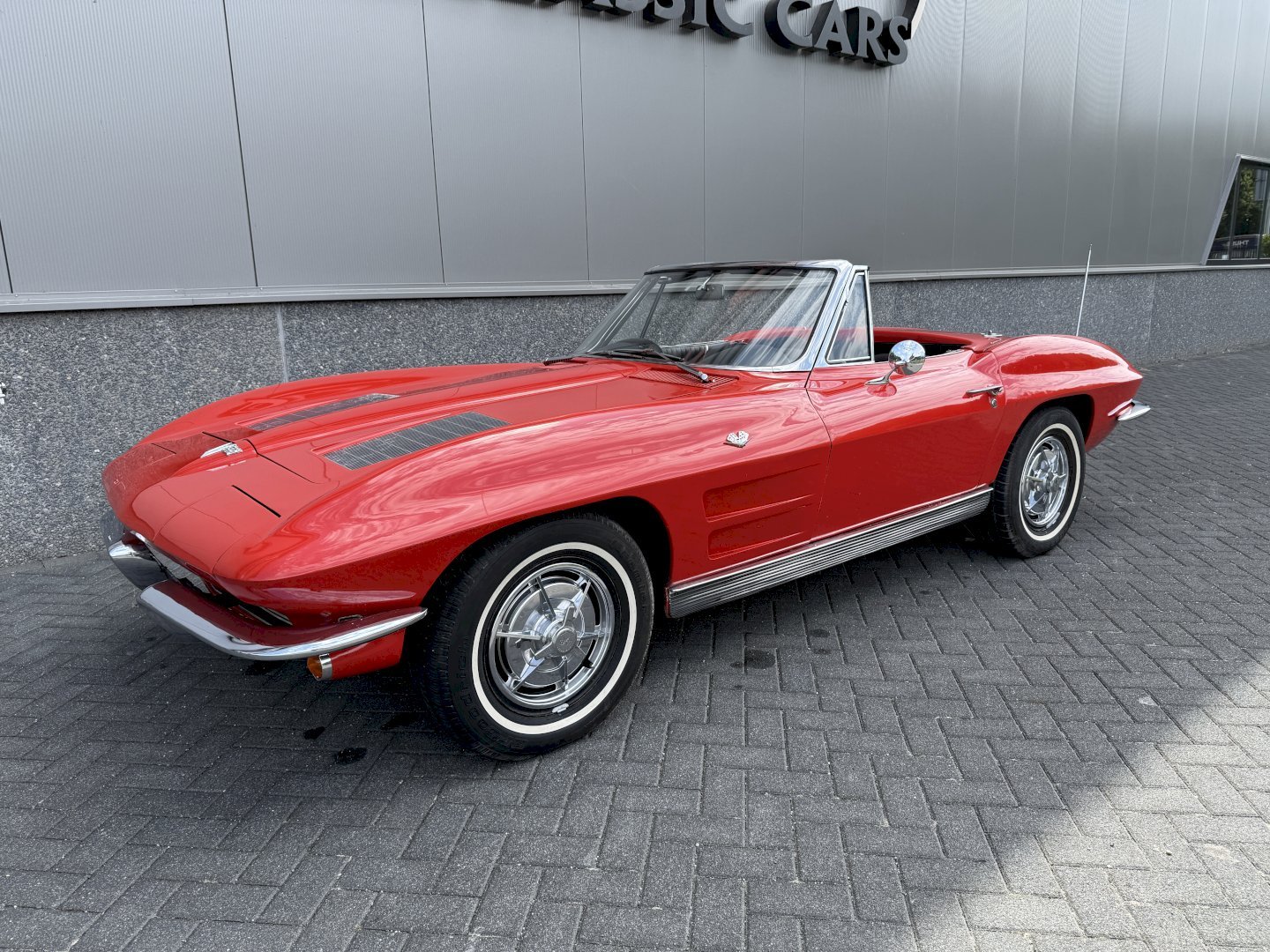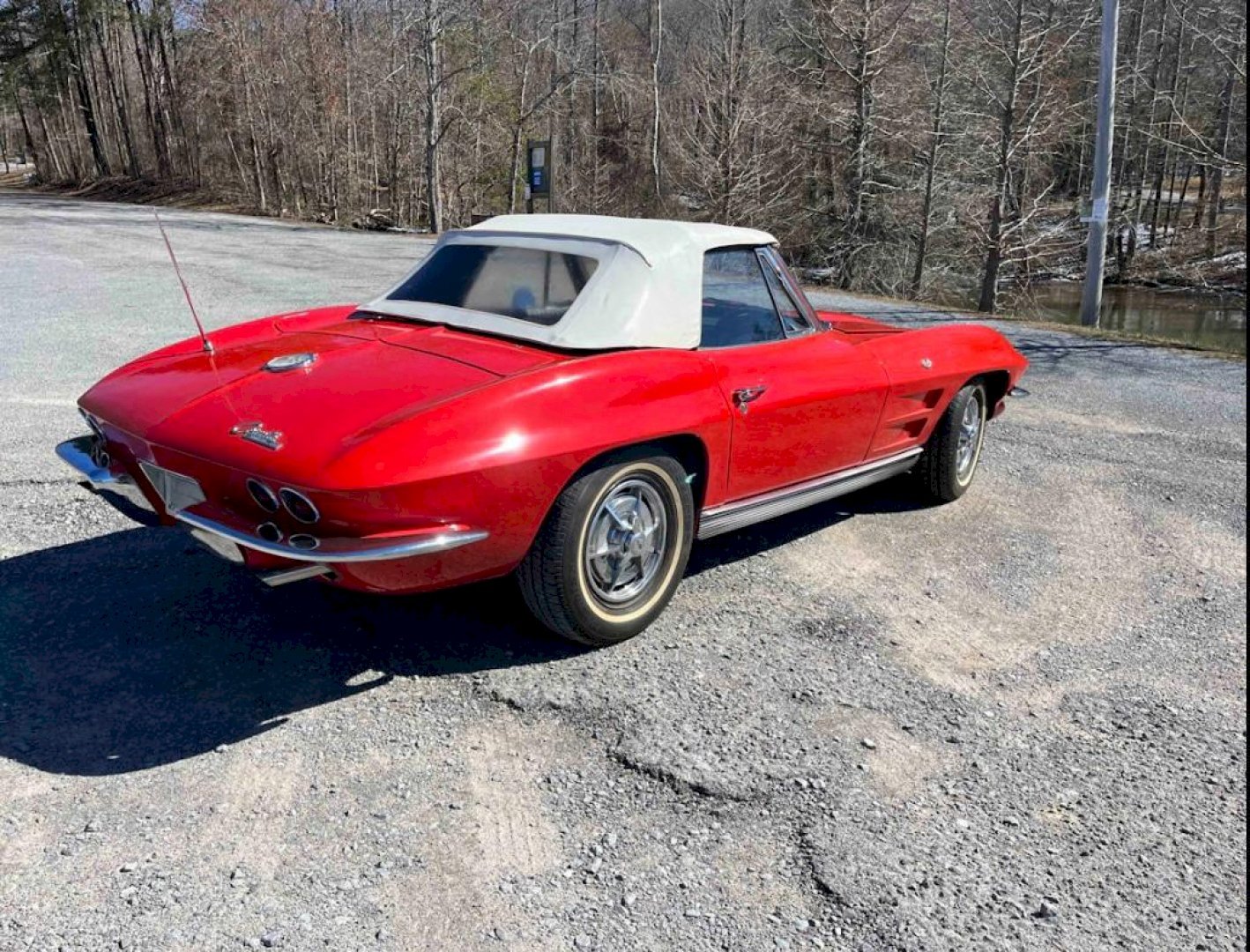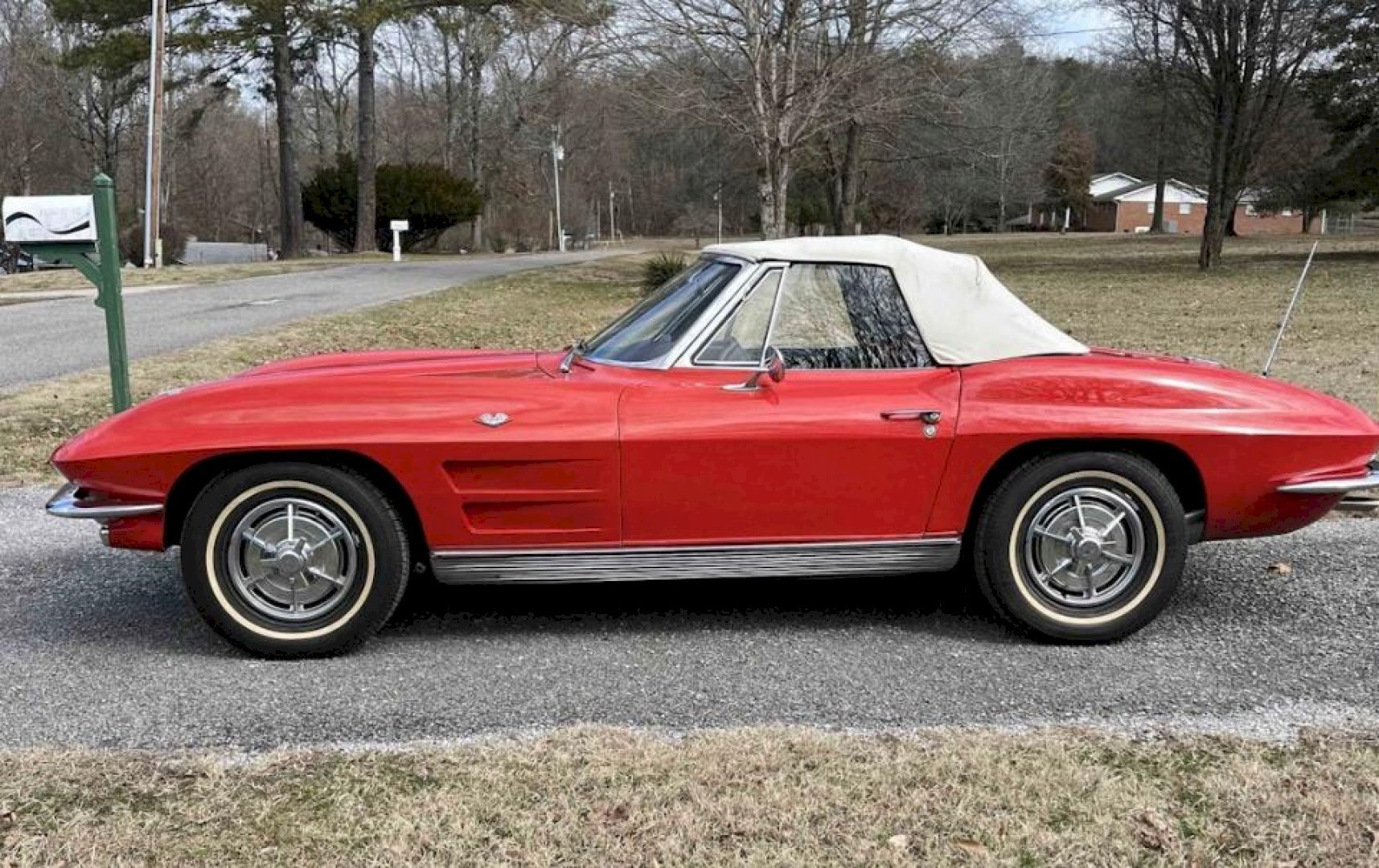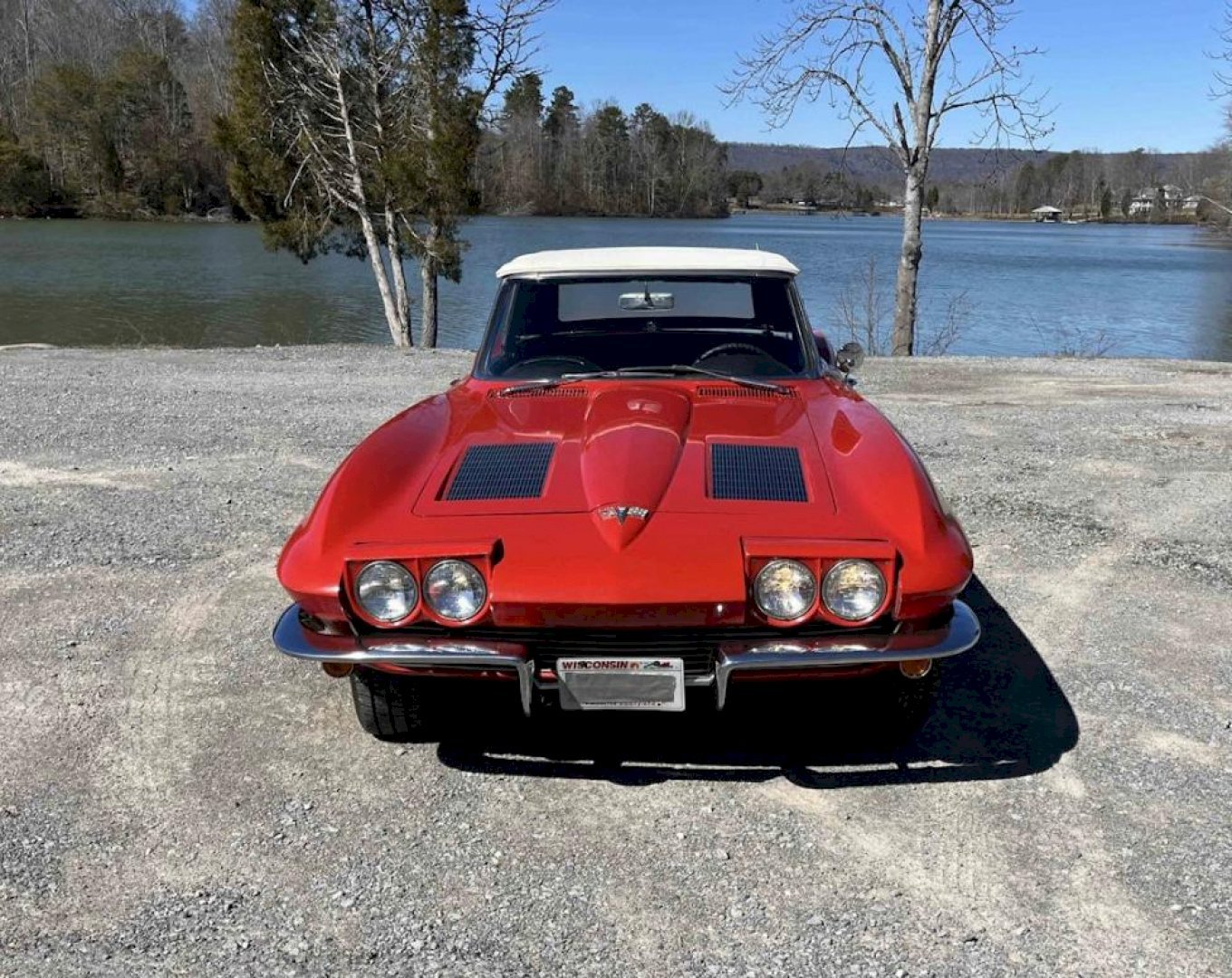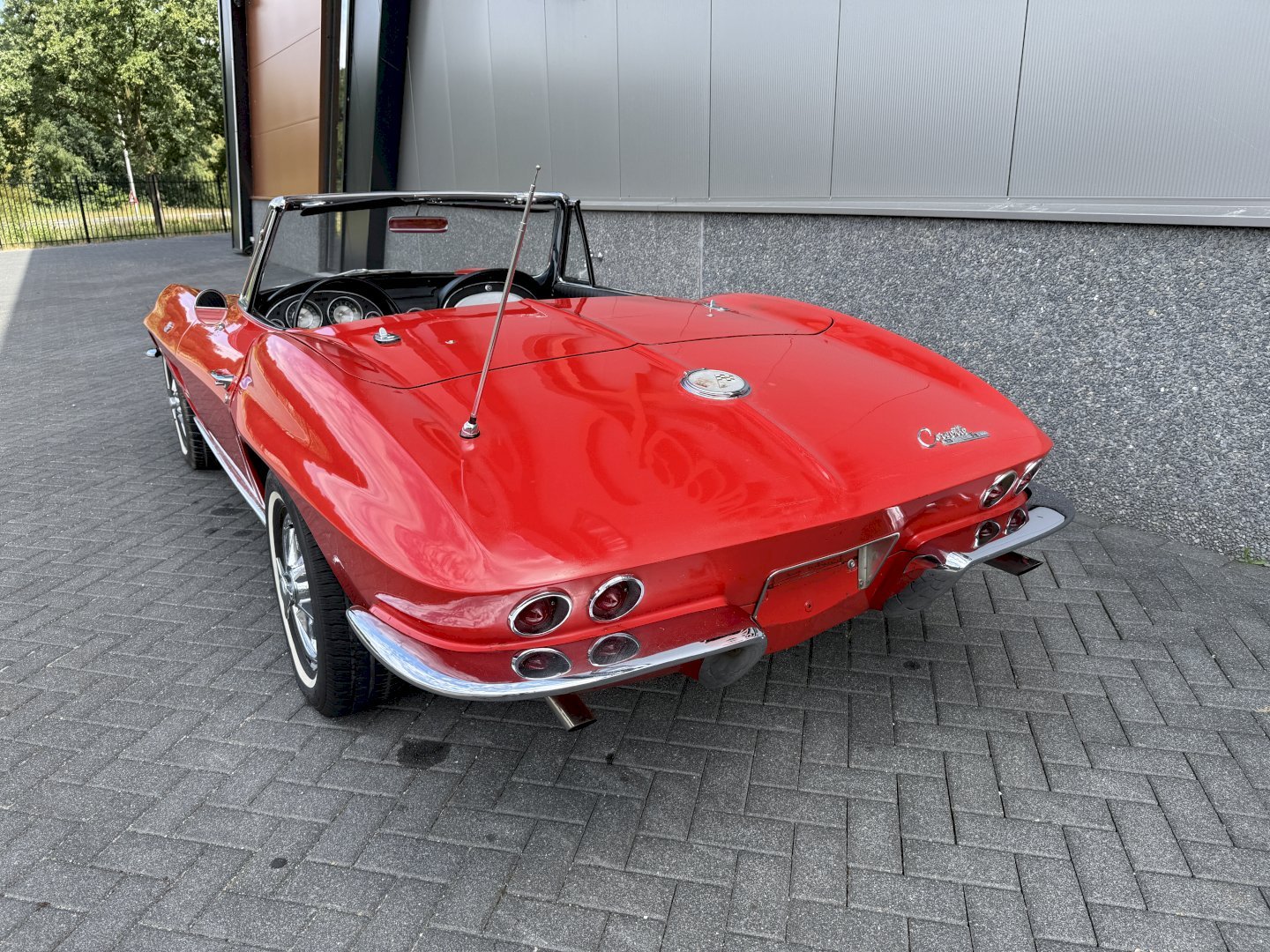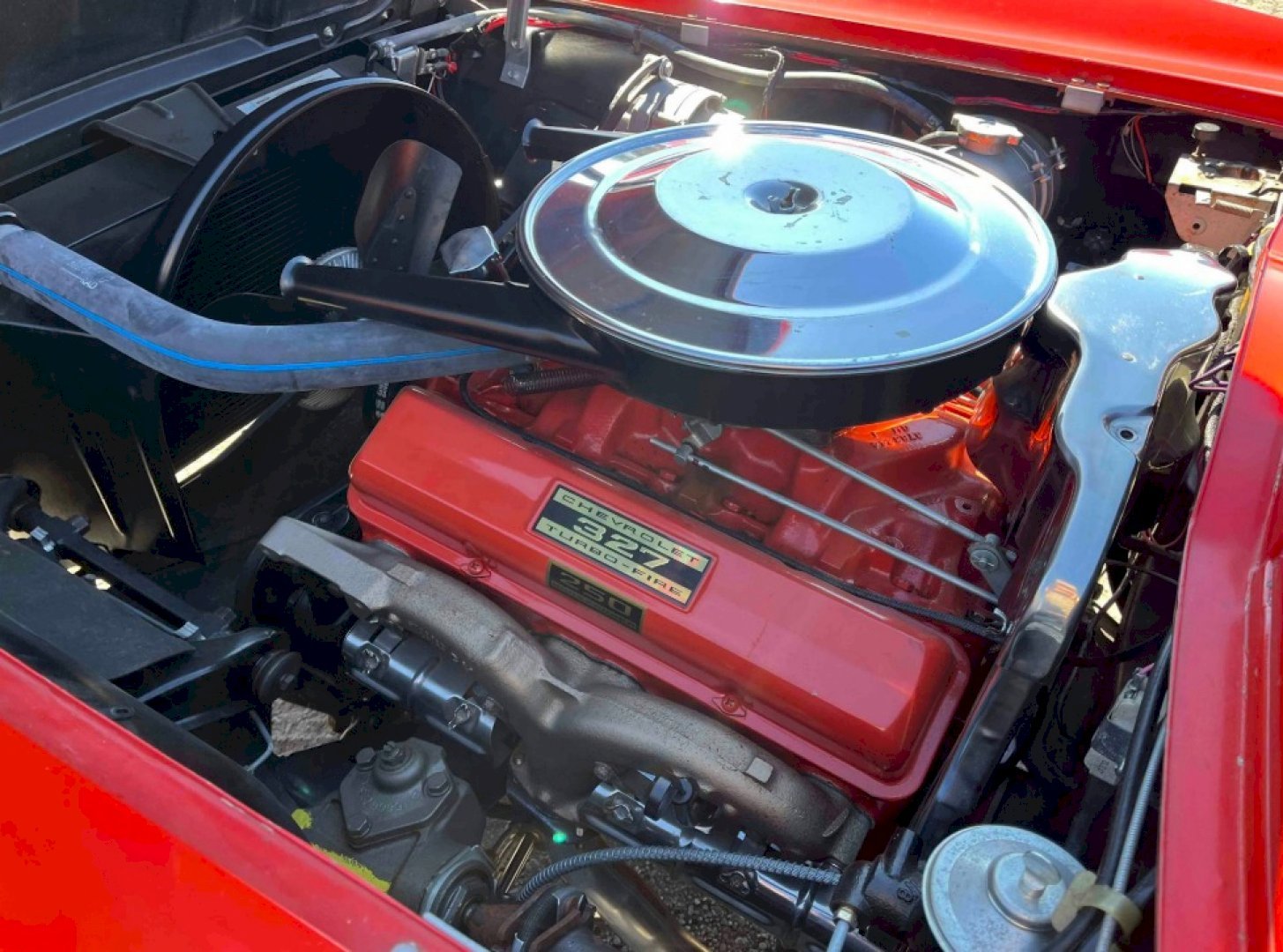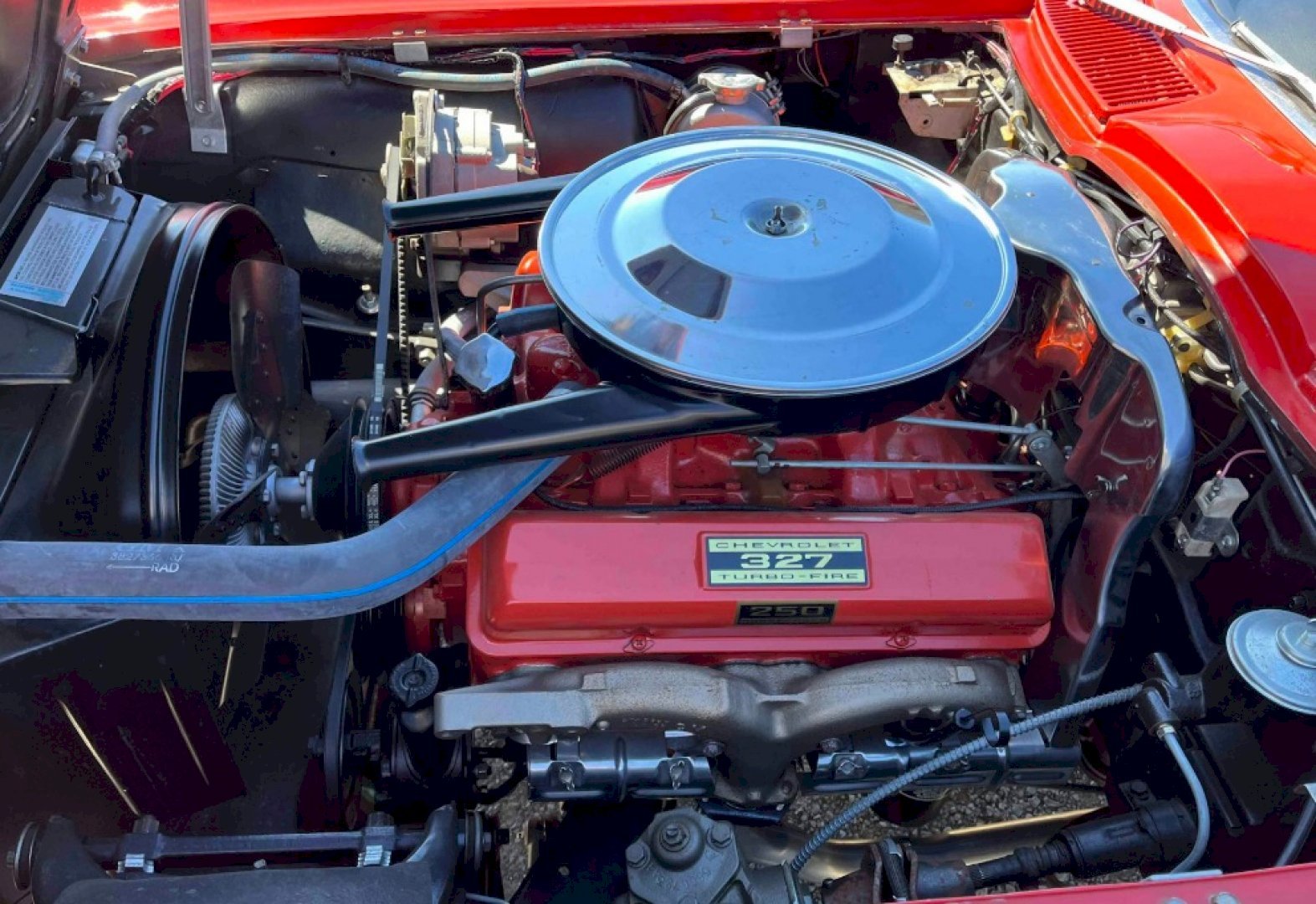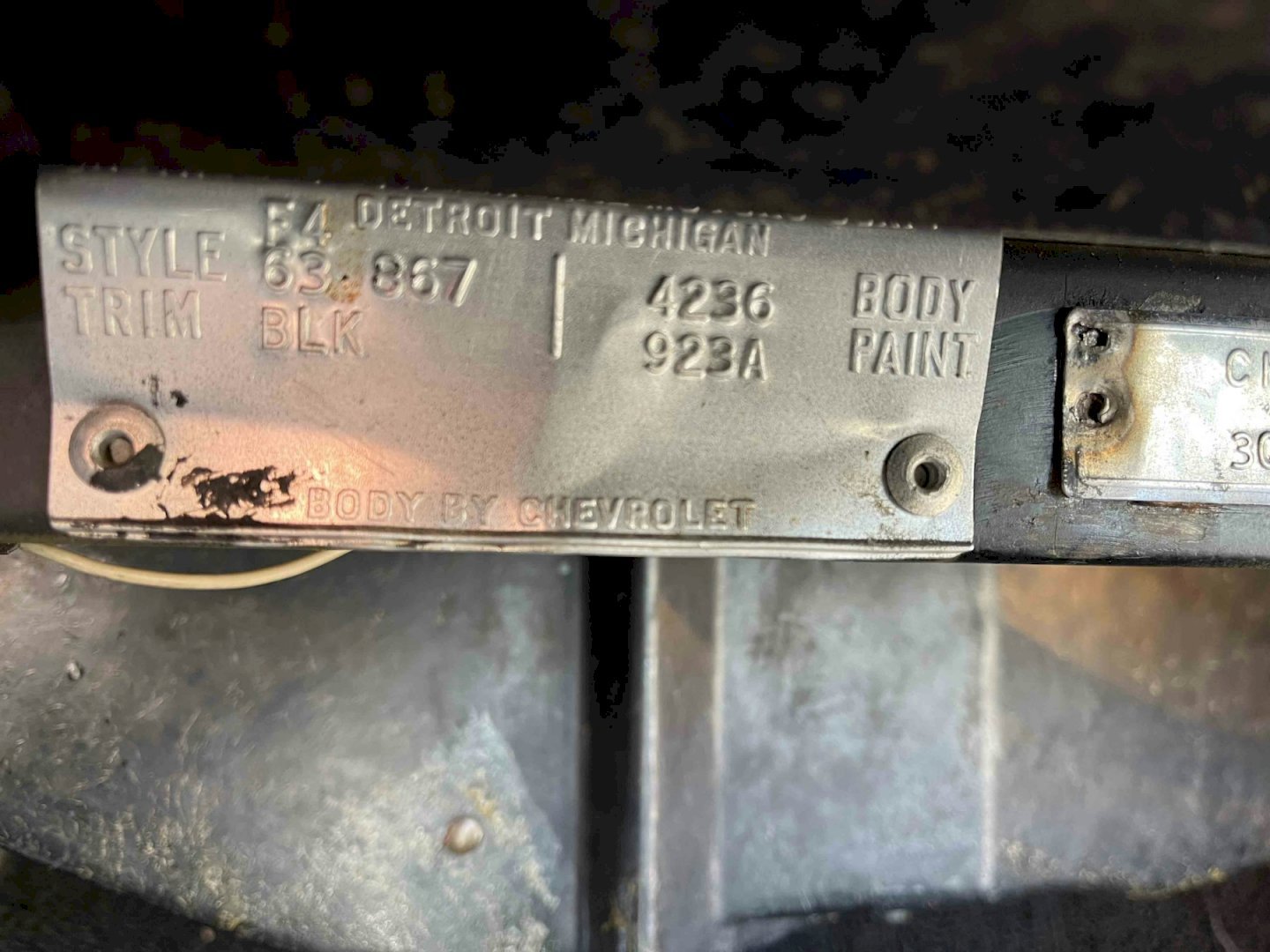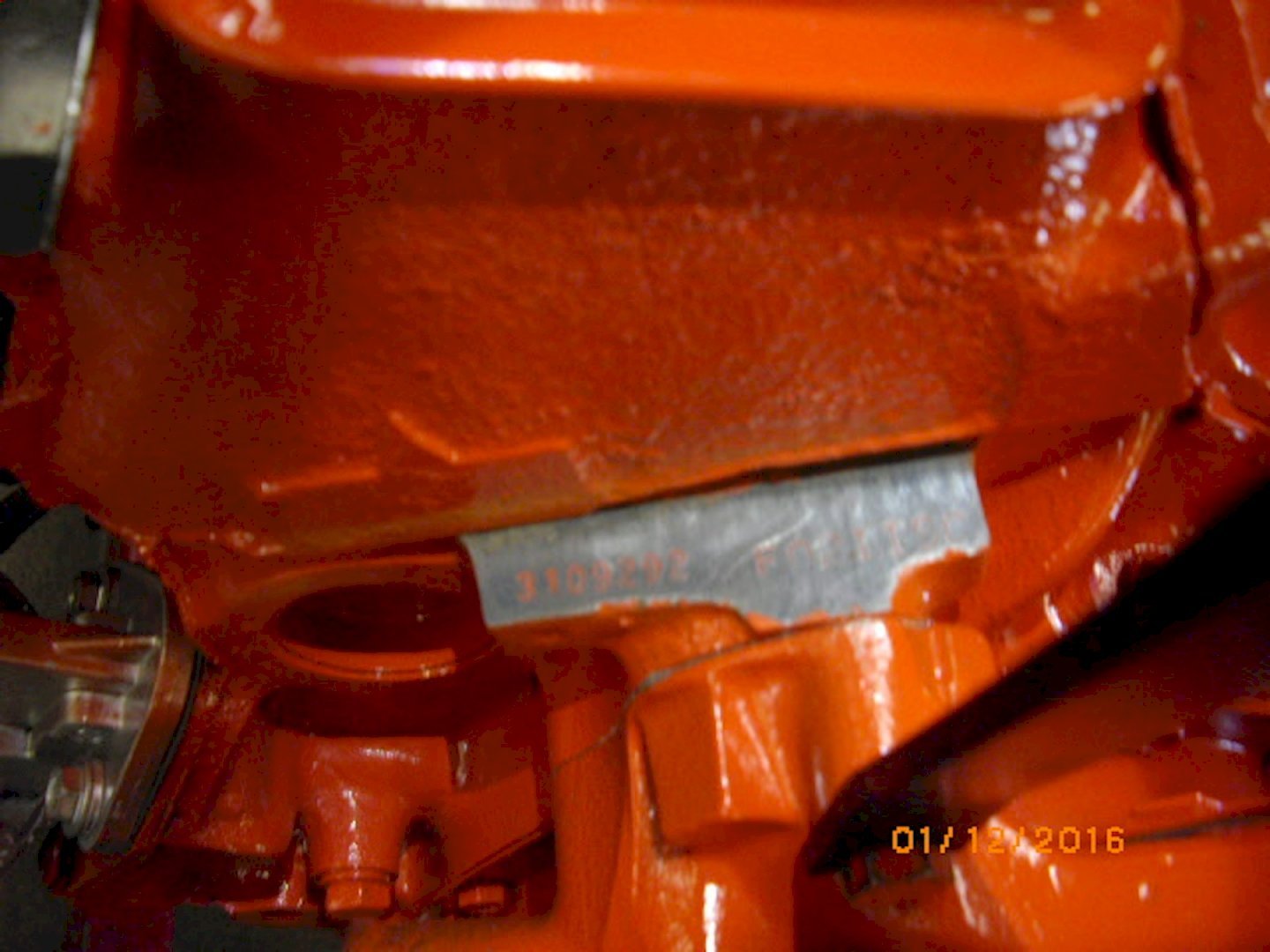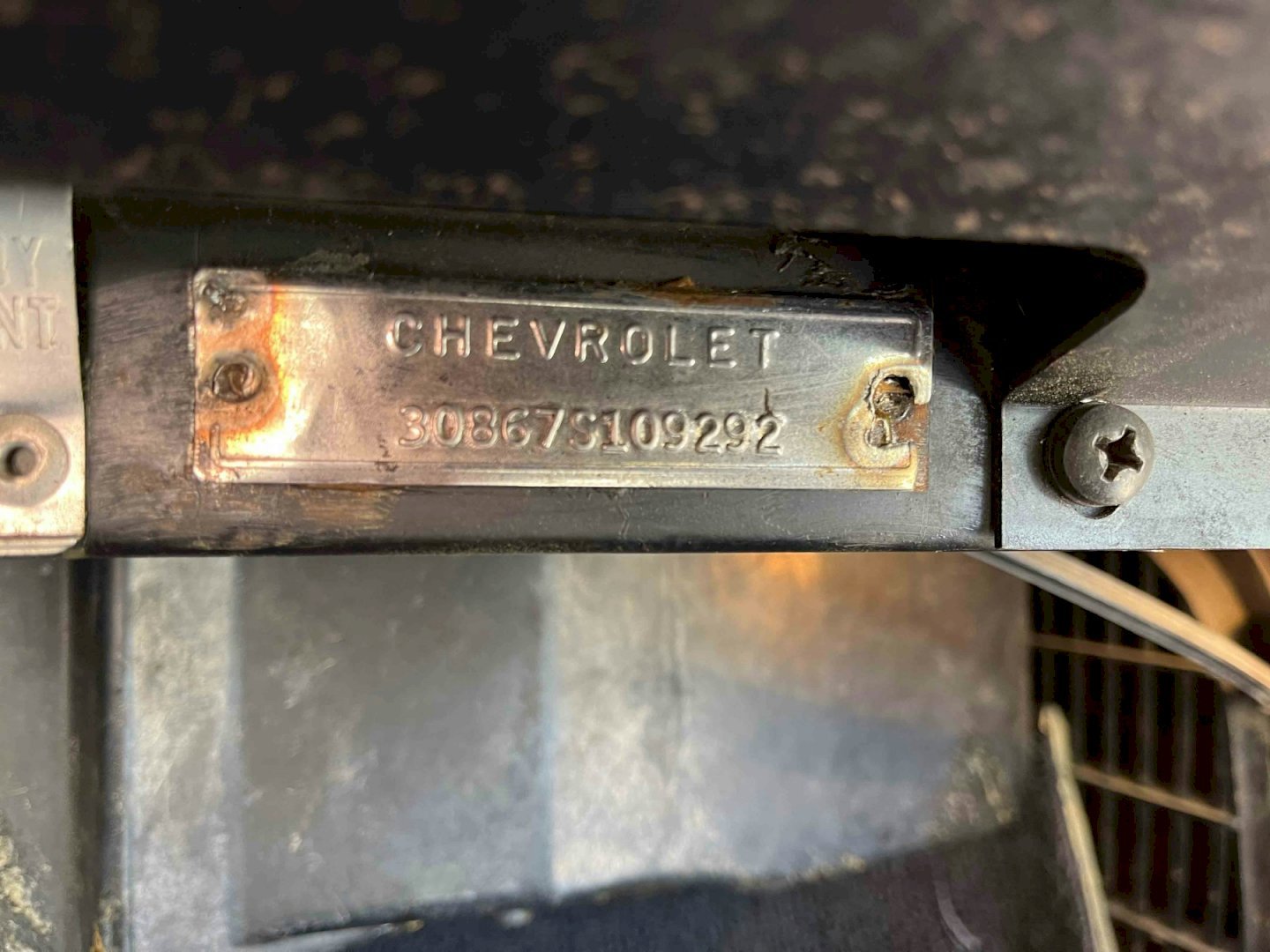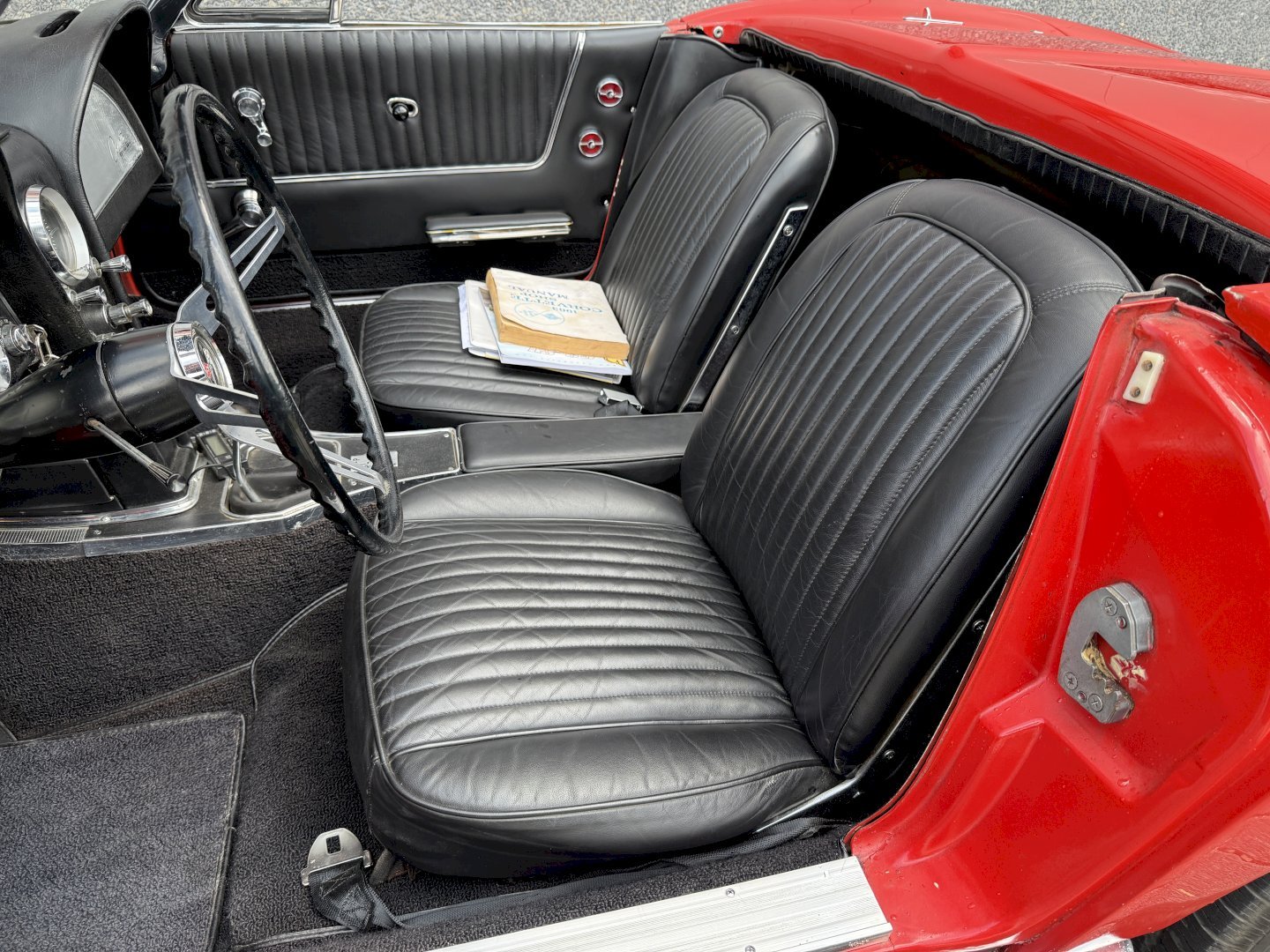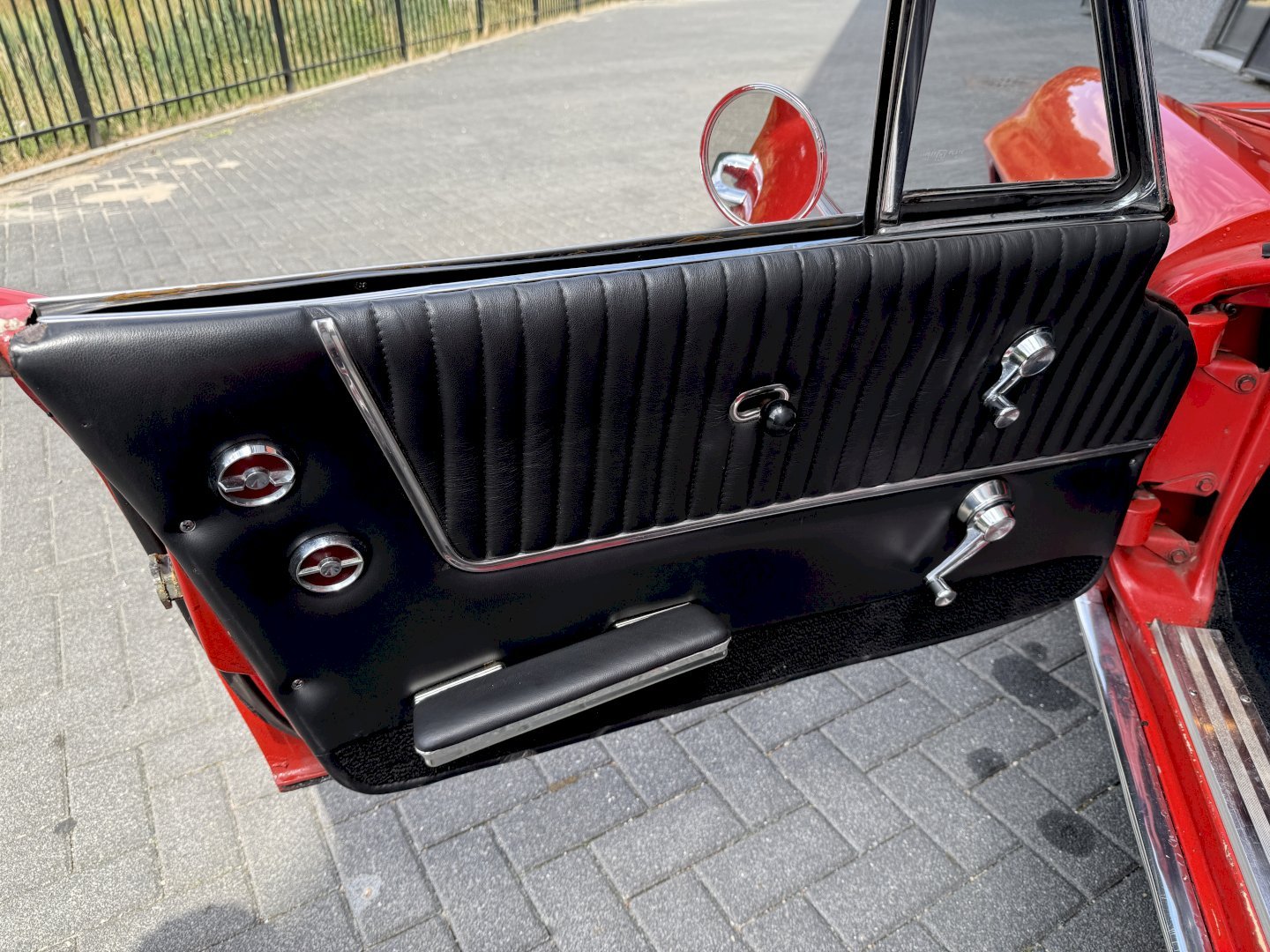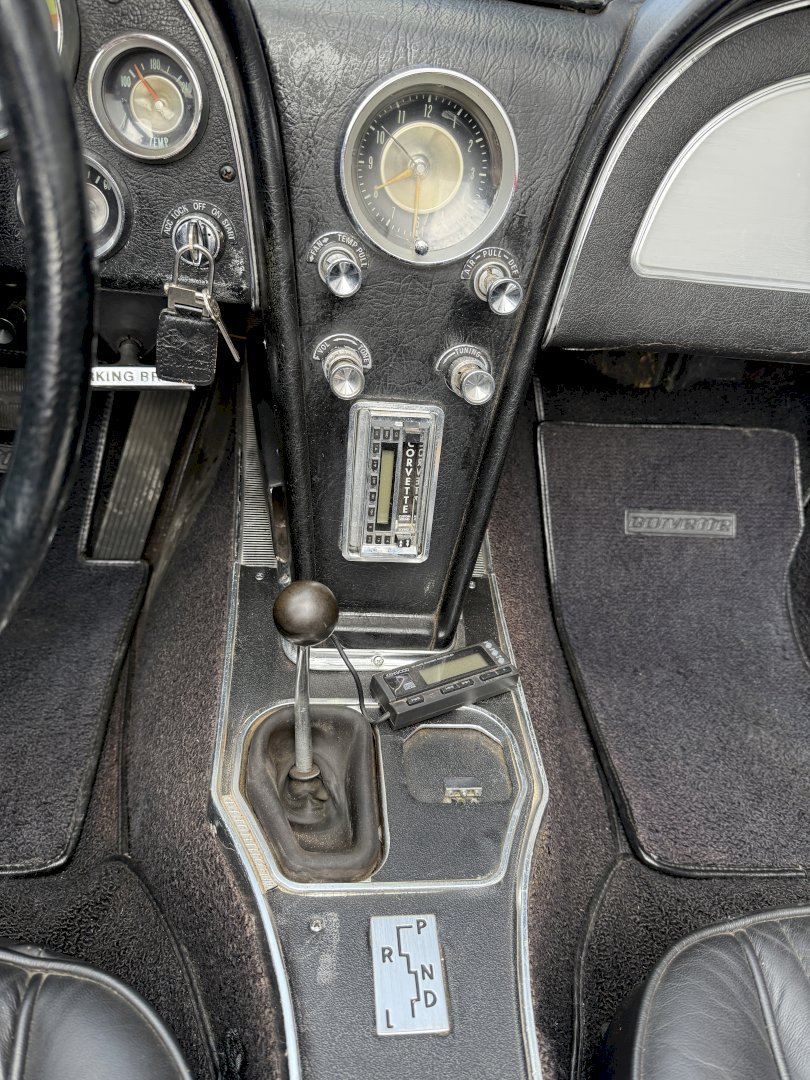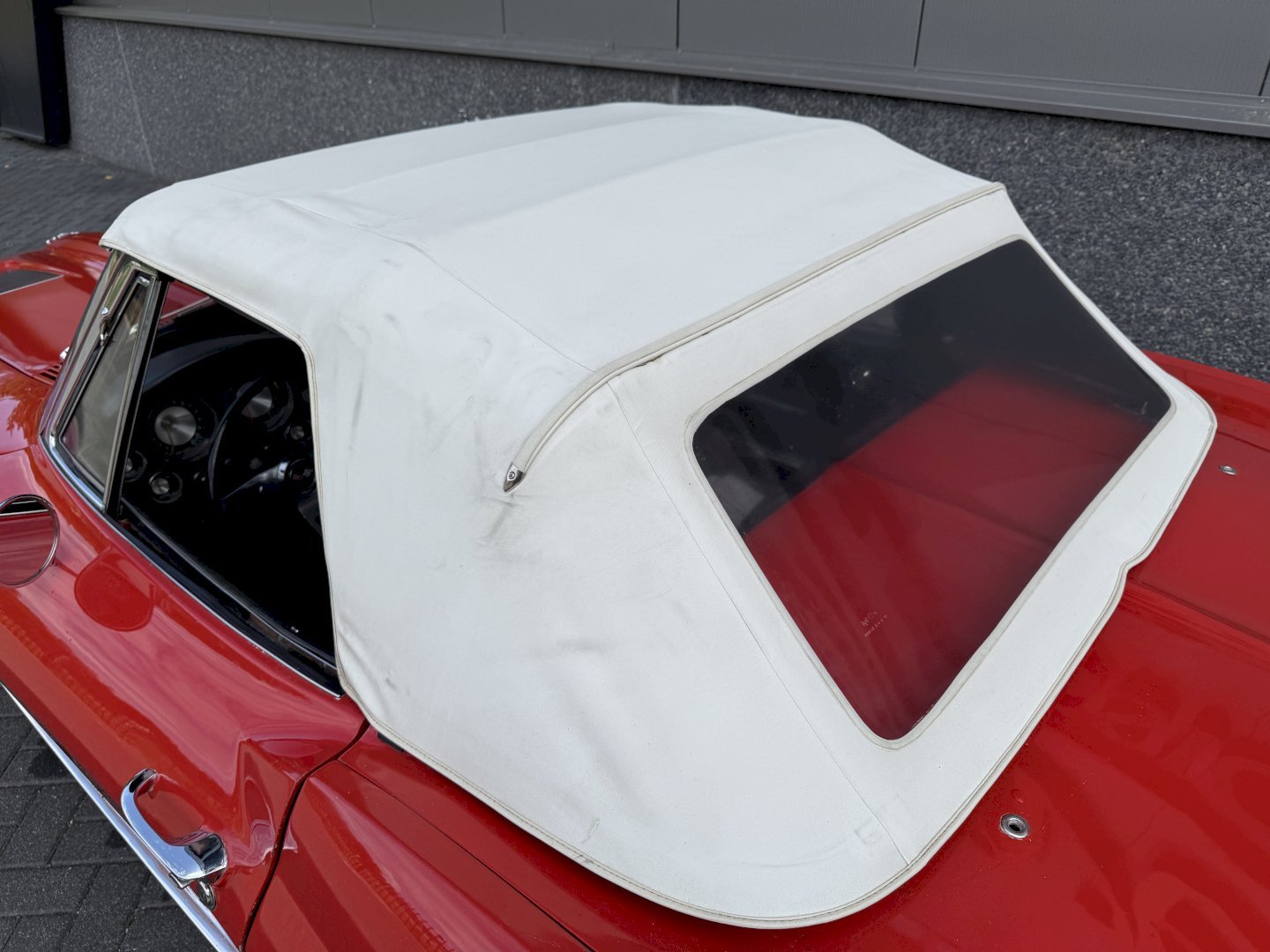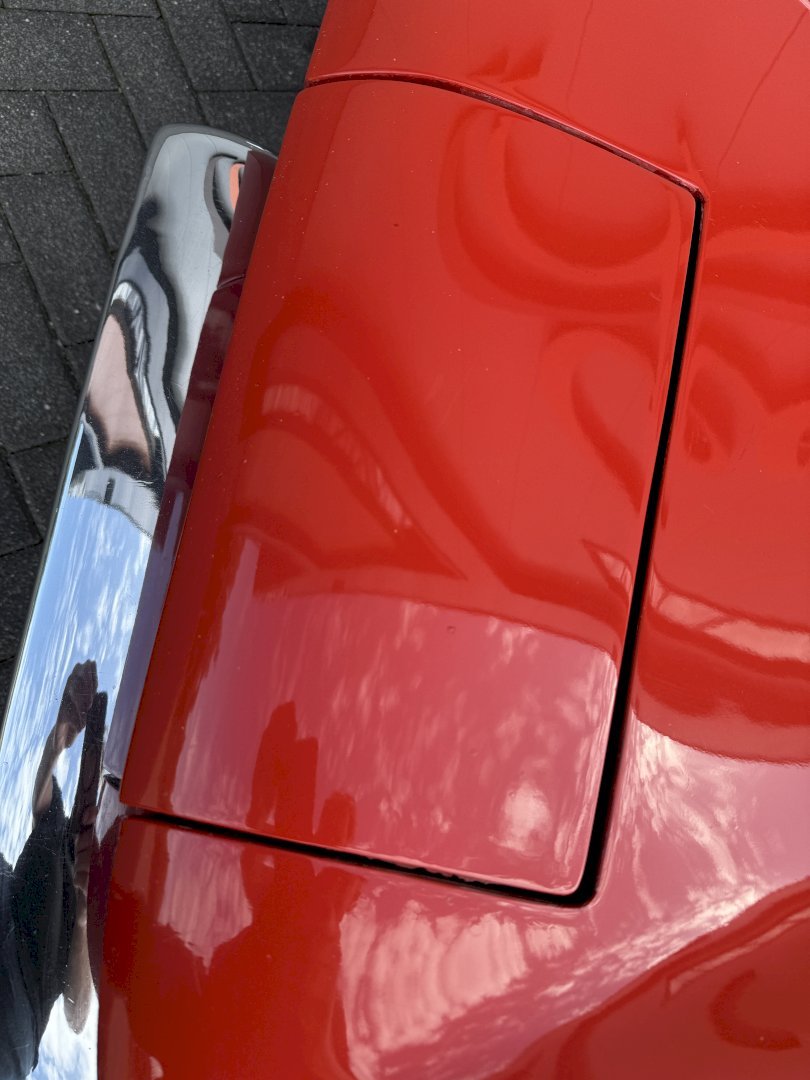Chevrolet Corvette Stingray Convertible 327/250
| Merk | Chevrolet Corvette |
|---|---|
| Type | Stingray Convertible 327/250 |
| Bouwjaar | 1963 |
| Kleur | Riverside Red |
| Interieur | Black Vinyl |
| Conditie | Goed |
| Prijs | € 52.500,- |
| Status | Nieuw in voorraad |
| Nummer | 3111 |
- Neem contact op
- Deel deze auto:
-
Omschrijving
The 1963 Corvette Sting Ray represents a pivotal moment in American automotive history. Its creation is steeped in legend, thanks to the visionary design of Bill Mitchell and Larry Shinoda. The aerodynamic body featured hidden rotating headlights and rode on a thoroughly re-engineered chassis. For the first time, Corvette included a four-wheel independent suspension system, developed by none other than Zora Arkus-Duntov — the man later celebrated as the “Father of the Corvette.” Under the hood, the new Sting Ray offered a range of 327 cubic-inch V8 engines delivering between 250 and 360 horsepower, firmly establishing it as a world-class sports car.
Though the high-performance models captured headlines, most 1963 buyers opted for the base model. With its 250-horsepower 327 V8 engine, it offered more than enough performance, paired with a choice of transmissions including a three- or four-speed manual or a Powerglide automatic. As Road & Track stated in its 1963 review, “As a purely sporting car, the new Corvette will know few peers on road or track.” The 10,919 convertible buyers that year certainly agreed.
Vehicle Highlights
Highly original, first-year 1963 Corvette Sting Ray Convertible
327 cu-in V8 with single 4-barrel carburetor rated at 250 horsepower
Rare Powerglide two-speed automatic transmission (only 1,115 built with the 250 hp engine)
Finished in factory-correct Riverside Red (paint code 923A)
Black vinyl interior with White soft top
Identification Details
Chassis Number: 30867S109292
3 = 1963
08 = Corvette
67 = Convertible
S = St. Louis assembly plant
109292 = Sequential production number (approx. July 1963 build date)
Trim Tag Decoding:
Style: 63 867 = 1963 Corvette Convertible
Body: 4236 = Body production number
paint: 923A = Riverside Red
Trim: BLK = Standard Black Vinyl Interior
- Foto's
-
Opties
- Automaat
- Radio
- Rembekrachtiging
- Stuurbekrachtiging
Wellicht heeft u interesse in...
-
Nieuw in voorraad#3111
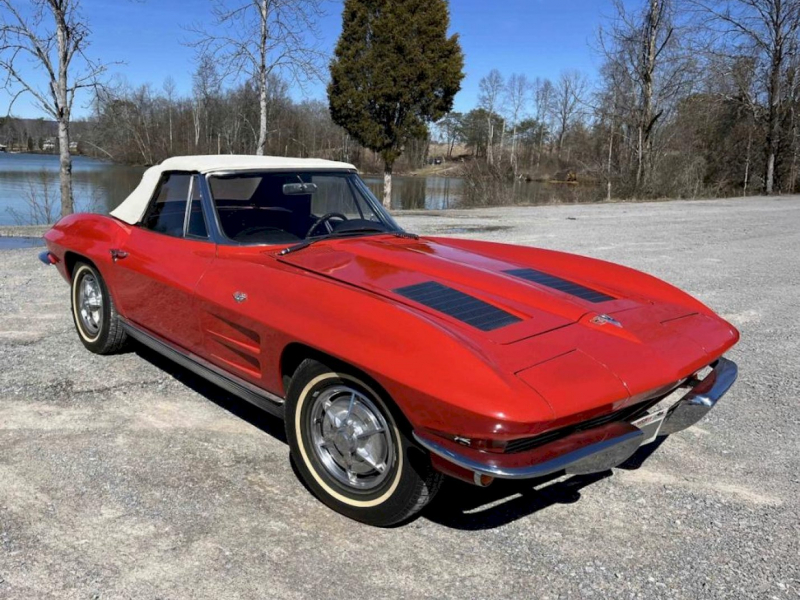
Chevrolet Corvette Stingray Convertible 327/250
- Prijs: € 52.500,-
- Kleur: Riverside Red
- Bouwjaar: 1963
-
Nieuw in voorraad#3272
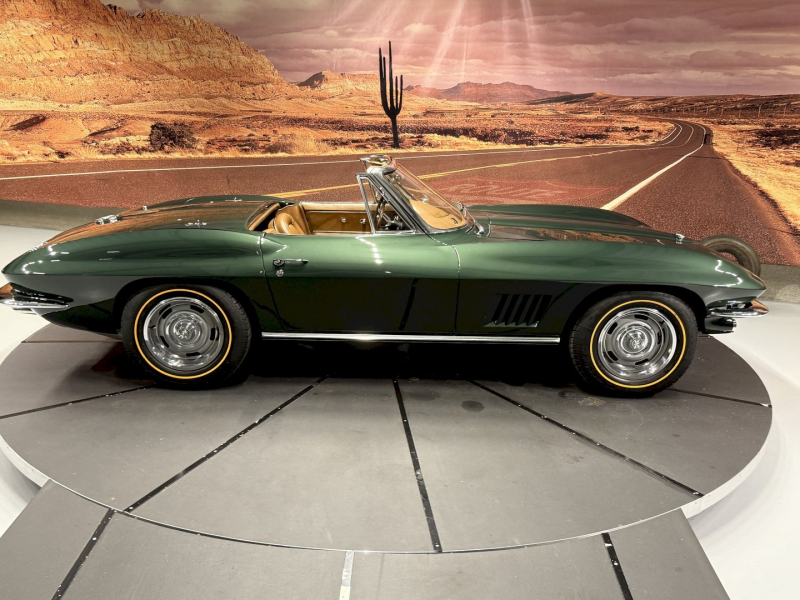
Chevrolet Corvette Convertible C2 convertible
- Prijs: Op aanvraag
- Kleur: Goodwood Green
- Bouwjaar: 1967
-
Nieuw in voorraad#3110
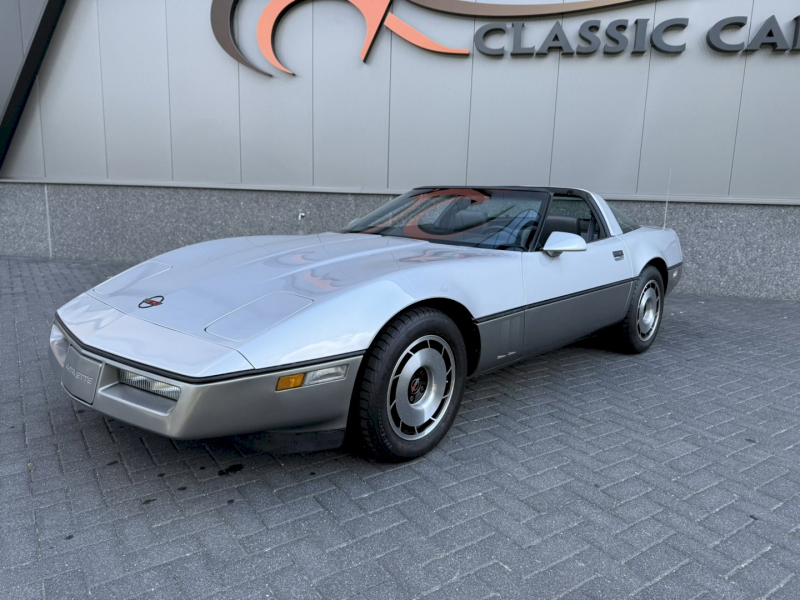
Chevrolet Corvette Coupe original only 6500 miles
- Prijs: € 30.000,-
- Kleur: Grijs
- Bouwjaar: 1984
-
Nieuw in voorraad#3121
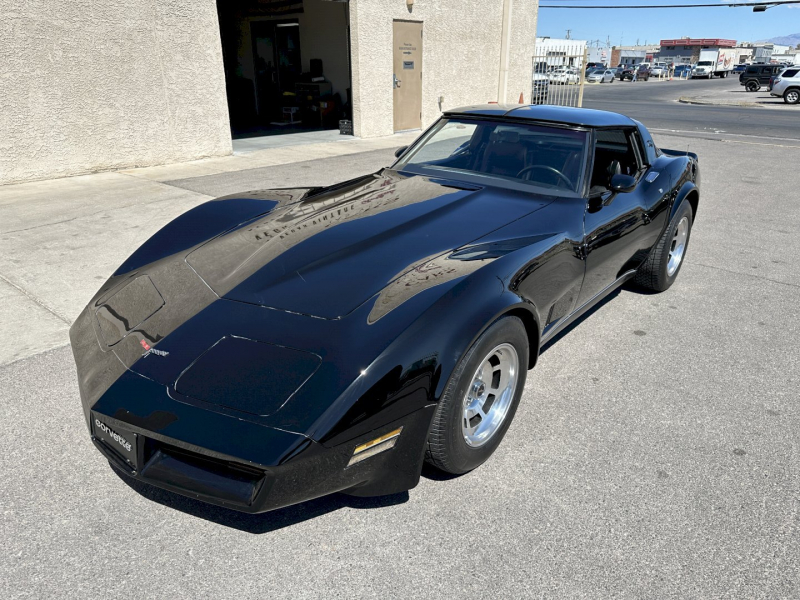
Chevrolet Corvette Coupe
- Prijs: € 23.500,-
- Kleur: Black
- Bouwjaar: 1981


